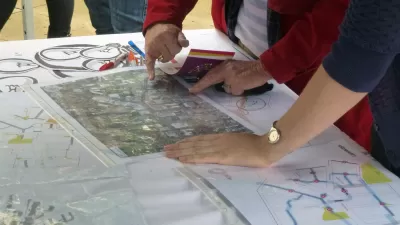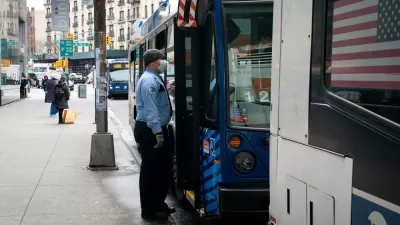While planning seems more intuitive than technical to many the layperson, Los Angeles planner Clement Lau describes what it takes to stay at the top of the profession.
"'Any idiot can plan!' That is the response I have heard some critics and cynics give when asked what AICP stands for. For those of you who are curious, if you do a search for 'AICP' on Google, the first item listed is the 'Association of Independent Commercial Producers'. This is perhaps appropriate given that very few people outside the planning profession actually know what AICP means. But as all planners should know, AICP refers to the American Institute of Certified Planners, which is the American Planning Association (APA)'s professional institute charged with the certification of professional planners, ethics, professional development, planning education, and the standards of planning practice."
"In order for a planner to become certified, s/he needs to do much more than just pass a 150-question multiple-choice exam. Even before taking the exam, candidates must meet specified education and employment eligibility requirements. For example, an applicant may only apply to take the exam if s/he has obtained a graduate degree in planning from a program accredited by the Planning Accreditation Board and have two years of professional planning experience."
Clement Lau goes on to explain the continuing education demographics of the field, the professional ethics code, licensing associations, and the continuing education requirements (including Planetizen's self-paced online course). "It is obvious that not any idiot can plan."
Thanks to William Adams (UrbDeZine.com)
FULL STORY: Any Idiot Can Plan?

Trump Administration Could Effectively End Housing Voucher Program
Federal officials are eyeing major cuts to the Section 8 program that helps millions of low-income households pay rent.

Planetizen Federal Action Tracker
A weekly monitor of how Trump’s orders and actions are impacting planners and planning in America.

Ken Jennings Launches Transit Web Series
The Jeopardy champ wants you to ride public transit.

Driving Equity and Clean Air: California Invests in Greener School Transportation
California has awarded $500 million to fund 1,000 zero-emission school buses and chargers for educational agencies as part of its effort to reduce pollution, improve student health, and accelerate the transition to clean transportation.

Congress Moves to End Reconnecting Communities and Related Grants
The House Transportation and Infrastructure Committee moved to rescind funding for the Neighborhood Equity and Access program, which funds highway removals, freeway caps, transit projects, pedestrian infrastructure, and more.

From Throughway to Public Space: Taking Back the American Street
How the Covid-19 pandemic taught us new ways to reclaim city streets from cars.
Urban Design for Planners 1: Software Tools
This six-course series explores essential urban design concepts using open source software and equips planners with the tools they need to participate fully in the urban design process.
Planning for Universal Design
Learn the tools for implementing Universal Design in planning regulations.
Heyer Gruel & Associates PA
Ada County Highway District
Institute for Housing and Urban Development Studies (IHS)
City of Grandview
Harvard GSD Executive Education
Toledo-Lucas County Plan Commissions
Salt Lake City
NYU Wagner Graduate School of Public Service





























